Dhorpatan Hunting Reserve is a unique destination for nature lovers and adventure seekers. Known as the only hunting reserve in Nepal, Dhorpatan offers an unparalleled experience for those looking to explore a combination of cultural heritage, wildlife, and pristine natural beauty. In this blog, we will take you through the key attractions, why this reserve is a must-visit destination, how to get there, and estimated budget details to plan your visit.
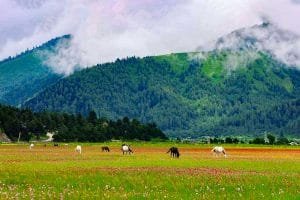
Key Attractions of Dhorpatan Hunting Reserve
1. Biodiversity and Wildlife
Dhorpatan Hunting Reserve is renowned for its rich biodiversity, especially its variety of wildlife. The reserve is home to several endangered species, including the Himalayan tahr, blue sheep, musk deer, and leopard. You may also spot a wide range of bird species like pheasants, vultures, and eagles. The variety of fauna makes it an ideal spot for wildlife enthusiasts and photographers.
2. Scenic Landscapes
The reserve covers an area of 1,575 square kilometers and offers breathtaking views of the surrounding mountains. The landscape is characterized by alpine meadows, deep valleys, dense forests, and snow-capped peaks. The view of Dhaulagiri, one of the highest mountains in Nepal, is particularly awe-inspiring.
3. Cultural Heritage
Dhorpatan is not just about wildlife and landscapes; it is also rich in cultural heritage. The local Magar and Thakali communities, who live in the surrounding areas, offer travelers an opportunity to experience traditional lifestyles, customs, and hospitality. You can explore their unique cultures and traditions, which have been preserved over centuries.
4. Hunting Opportunities (Regulated)
While the Dhorpatan Hunting Reserve is known for its hunting activities, it’s important to note that hunting here is strictly regulated and is allowed only for tourists with special permits. This makes it a unique destination for hunters and wildlife enthusiasts who wish to experience a traditional form of hunting in a sustainable manner. The reserve is divided into zones, and each hunting season is scheduled to ensure the conservation of species.
5. Trekking and Adventure
For trekkers and adventurers, Dhorpatan offers a range of trekking opportunities. The reserve’s remote location makes it an off-the-beaten-path destination, providing a sense of isolation and tranquility. You can embark on multi-day treks through the reserve, exploring its forests, hills, and valleys while enjoying panoramic views of the Himalayas.
Rare and Endangered Species in Dhorpatan Hunting Reserve
Blue Sheep (Bharal)
The Blue Sheep is the most iconic animal of the Dhorpatan Hunting Reserve. These animals are not actually blue in color, but their coat has a bluish-gray tint, which is where their name comes from. The blue sheep are known for their agility and strength, thriving in the rugged, steep terrains of the reserve.

- Habitat: Blue sheep are typically found at higher altitudes, from 3,000 to 5,000 meters, often grazing on the rocky cliffs and alpine meadows.
- Appearance: Males have large, curved horns, while females have smaller horns. Their dense, woolly fur helps them survive the cold temperatures at these high elevations.
- Conservation Status: The blue sheep is listed as a species of Least Concern by the International Union for Conservation of Nature (IUCN). However, their populations are under threat due to habitat loss and poaching, which is why reserves like Dhorpatan play a critical role in their conservation.
Himalayan Tahr (Hemitragus jemlahicus)
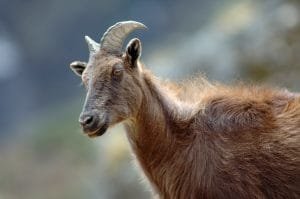
- This is another key species that inhabits the reserve. The Himalayan tahr is a large herbivorous mammal native to the Himalayas. They are known for their impressive reddish-brown coat and are often seen in rocky, high-altitude habitats.
- Conservation Status: The Himalayan tahr is listed as Near Threatened on the IUCN Red List. Conservation efforts in Dhorpatan are crucial for preserving their populations.
Musk Deer (Moschus spp.)
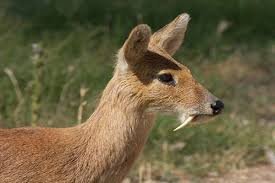
- The Musk Deer is a small, elusive species found in the forests and alpine meadows of Dhorpatan. Musk deer are particularly valued for the musk they produce, which has led to overhunting.
- Conservation Status: Musk deer are classified as Vulnerable due to illegal poaching for their musk and habitat destruction.
Leopard (Panthera pardus)
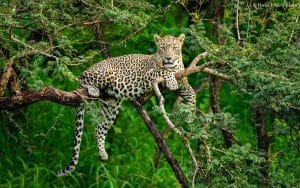
- Leopards are solitary and elusive predators found in the forests surrounding Dhorpatan. They are opportunistic hunters, preying on smaller mammals, birds, and sometimes even domestic animals in the area.
- Conservation Status: Leopards are classified as Near Threatened by the IUCN, with their populations decreasing due to habitat loss and human-wildlife conflict.
Himalayan Black Bear (Ursus thibetanus)
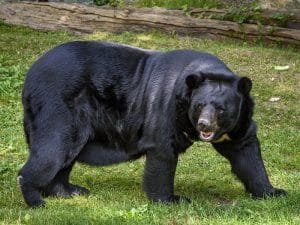
- The Himalayan black bear is another important species in the reserve. These bears are found at high altitudes, foraging for fruits, insects, and small mammals.
- Conservation Status: The Himalayan black bear is also Vulnerable, facing threats from habitat destruction and poaching for their body parts.
Himalayan Griffon Vulture (Gyps himalayensis)
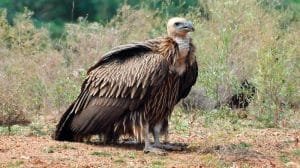
- This majestic bird of prey is often seen soaring above the Dhorpatan reserve. Known for its impressive size, the Himalayan griffon vulture plays a vital role in the ecosystem by scavenging carcasses.
- Conservation Status: The Himalayan griffon vulture is classified as Near Threatened due to habitat loss, poisoning, and the decline in food sources.
Tibetan Wolf (Canis lupus chanco)
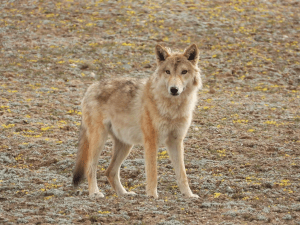
- The Tibetan wolf is a subspecies of the gray wolf, found in the higher altitudes of Dhorpatan. These wolves prey on herbivores such as the blue sheep, musk deer, and domestic livestock.
- Conservation Status: Tibetan wolves are generally not considered endangered, but like many other species in the area, they face threats from habitat fragmentation and human-wildlife conflict.
Pheasants (Various species)
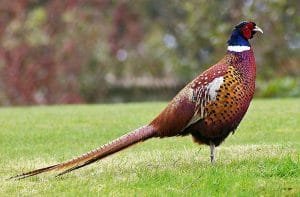
- The reserve is also home to several species of pheasants, including the Danphe (Himalayan Monal), which is the national bird of Nepal. These colorful birds are often spotted in the forests and meadows.
- Conservation Status: The Himalayan Monal is considered Least Concern, though other pheasant species face varying degrees of threat.
Why Dhorpatan Hunting Reserve is a Must-Visit Destination
- Unique Experience: As the only hunting reserve in Nepal, Dhorpatan offers a one-of-a-kind experience for wildlife enthusiasts, hunters, and trekkers alike.
- Wildlife and Conservation: Dhorpatan is a haven for rare and endangered species, making it a key area for conservation efforts. Visiting helps support the protection of these animals and their habitats.
- Adventure Activities: Whether you’re interested in hunting, trekking, or simply experiencing nature at its best, Dhorpatan provides a plethora of activities for adventure seekers.
- Cultural Immersion: With the local communities preserving traditional ways of life, Dhorpatan offers travelers a glimpse into the rich cultural tapestry of western Nepal.
- Pristine Environment: Due to its remote location and limited tourism, the reserve remains largely untouched, providing an authentic and peaceful natural environment.
How to Get There
Dhorpatan is located in the Baglung District of western Nepal. The journey to the reserve is an adventure in itself, involving a combination of driving and trekking.
By Air
- The closest airport to Dhorpatan is in Pokhara, which is well connected with international flights from Kathmandu.
- From Pokhara, you can take a flight to Jomsom (depending on weather conditions) or drive to Baglung.
By Road
- From Kathmandu, you can travel by bus or jeep to Baglung, a journey that takes approximately 8-10 hours.
- From Baglung, you will need to hire a jeep or trek to reach the reserve. The journey can be long and rough, so hiring a local guide is recommended to navigate the terrain.
Trekking to Dhorpatan
- Once you reach the nearest point, you will need to trek for about 4-5 days to reach the core area of the reserve. The trekking routes are challenging, with steep ascents and descents, so you should be prepared for a physically demanding experience.
Estimated Budget for Dhorpatan Hunting Reserve Visit
Visiting Dhorpatan is not your typical budget trip, as it requires a certain level of planning and budgeting due to its remote location and exclusive activities. Here’s an estimated breakdown of the costs:
1. Travel Costs:
- Kathmandu to Pokhara:
- By bus: NPR 700–1,000
- By flight: NPR 3,000–7,000
- Pokhara to Baglung:
- By bus/jeep: NPR 1,500–3,000
- Baglung to Dhorpatan:
- Trekking: Guide fees (NPR 2,500–4,000 per day)
- Jeep ride: NPR 5,000–7,000 (per day, depending on the road conditions)
2. Entry and Permit Fees:
- Entry Permit for Dhorpatan: NPR 1,000–2,000 (for Nepali tourists)
- Hunting Permit (if applicable): NPR 10,000–50,000 (for foreign tourists, depending on the species)
3. Accommodation:
- Teahouse or Local Lodges: NPR 500–1,500 per night (depending on the facilities)
- Camping (if trekking): NPR 200–500 per night for camping and food
4. Food:
- Daily food expenses can range from NPR 500 to NPR 1,000 per person, depending on where you choose to eat.
5. Additional Expenses:
- Guide and Porter: If hiring a guide or porter, expect to pay NPR 2,500–4,000 per day.
- Travel Insurance: NPR 2,000–5,000 (based on coverage)
Total Estimated Budget:
- For a 7-day trip (including transportation, permits, guide, food, and accommodation): NPR 40,000–60,000 for Nepali nationals, and NPR 80,000–120,000 for foreign tourists.
Conclusion
Dhorpatan Hunting Reserve offers a truly unique experience that combines adventure, wildlife, culture, and breathtaking natural beauty. It is an ideal destination for those who are willing to venture off the beaten path and explore the remote and rugged beauty of western Nepal. Whether you are a nature lover, a hunter, or an adventure seeker, Dhorpatan promises memories that will last a lifetime.


